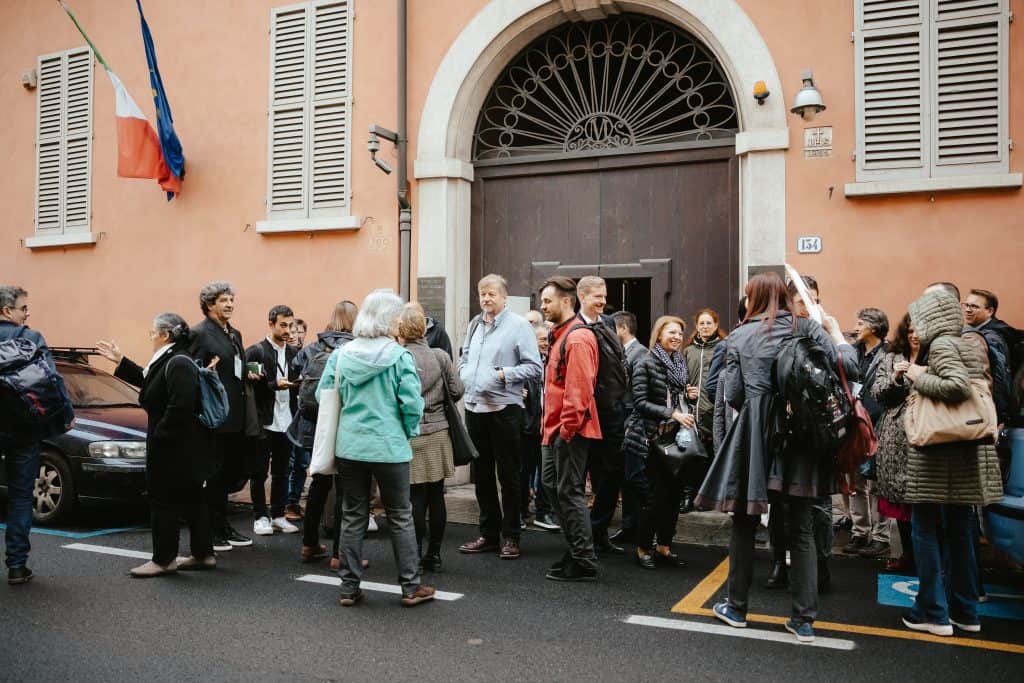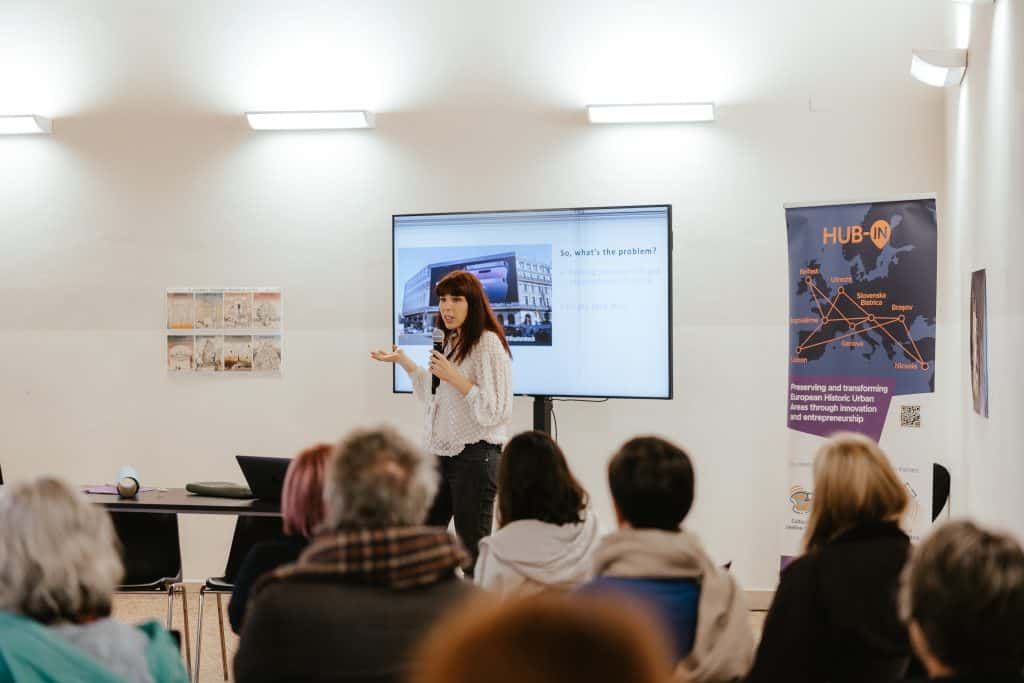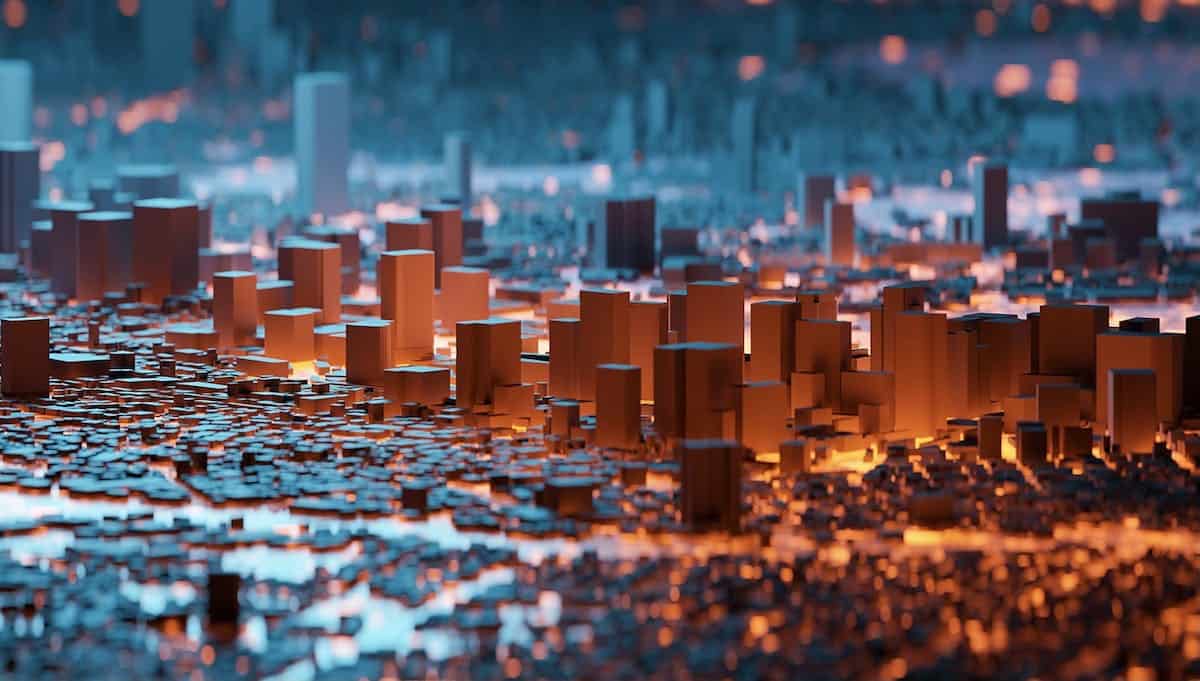Olinda is an imaginary city born from the imagination of Italo Calvino, which expands in arcs. To fully appreciate all the features of this constantly evolving city, you need a magnifying glass. The older quarters are carried by the expanding ancient walls. Invisible Cities, Italo Calvino, newer quarters grow up on the periphery and thin out to make room for even more new ones pressing in from the inside.
Like Olinda, our cities must continue to regenerate in order to be future-proof. This is why Energy Cities’ HUB Fair Economies aims to rethink the potential of cities by developing a regional economy that is more resource-efficient and people-centered.
We took our partners and members on a tour of industrial regeneration on October 18 during the Inspirational Day at the Annual Forum in Modena to learn how to reclaim open space for the general public. Let’s take a closer look.

A Walking Tour Through Modena’s Transformation: Industrial Regeneration And Vacant Spaces
How can deserted areas be given new life?
Our tour of Modena, Italy, demonstrated that art can reimagine outdated hospitals and factories. The stroll began in the center of Polo Sant’Agostino’s ancient district. What was once a hospital will quickly become one of the largest social hubs in Italy, with an exhibition area and the city’s major cultural institutions.
The next stop on this motivational walking tour was Modena’s Creativity Park, which consists of four significant buildings being redeveloped urbanally into:
- The Municipal Electric Companies’ ( AEM ) former headquarters, the Laboratorio Aperto, has been transformed into a cutting-edge creative hub where new businesses and artists can flourish.
- the brand-new Teatro delle Passioni, which has a performance area outside.
- The brand-new gymnasium was created for use by the center’s schools as well as for athletic training and competitions. Due to a rooftop 32KWp photovoltaic system, the building has extremely low consumption and running costs and is almost entirely energy-efficient.
- 900 square meters will house a neighborhood supermarket, offices, and venues for gatherings and catering.
A pedestrian plaza, bicycle facilities, and access routes have all been added as a result of the renovations, which have also spurred broader industrial regeneration. Plans to turn an abandoned professional plant into a green mobility innovation district, supported by the National Recovery and Resilience Plan, providing opportunities for start-ups and further exploration, are part of Modena’s transformation.
We must return to investigate it!

Can Cities Remove Ads? How to Return Common Spaces to the People
A moral city ought to be concerned for its residents. Ads are already pervasive and have a significant impact on everyone. This overexposure encourages overconsumption by fostering fresh needs and promoting goods or services that go against the urgency of the climate and global boundaries.
We established a Future Generation Court, or” trial ,” to discuss whether and how cities can reclaim public space in order to interact with our speakers and the general public.
Fossil Free campaigner Charlotte Braat testified that fossil advertising has now been outlawed in 25 cities worldwide. Her French organization is pushing for a regional or international law that forbids all fossil advertising, including in the aviation industry, fossil products and services, and other industries. ), which was motivated by the World Health Organization’s ( Framework Convention on Tobacco Control ) tobacco advertising bans.
Finally, Benjamin Badouard from Lyon Metropolis, Flavia Boghiu from Brasov, and Ziggy Klazes from Haarlem all discussed how outdoor advertising was restricted in their respective cities. A nearby motion in Haarlem will outlaw advertisements for non-electric vehicles, fossil fuels, and vacation flights starting in 2024. The most well-liked tourist destination in Romania, Brasov, works to become a clean city. In the HUB – IN project, it is reevaluating its traditions, limiting advertisements on facades, giving pedestrians more space, and redesigning industrial furniture in order to create a lasting and courteous public space. A new regional outside regulation that will, among other things, outlaw 60 to 80 % of secret billboards and illuminated signs at the top of buildings was recently approved by Lyon Metropolis. Additionally, panels will only be 4 m2 in size. & nbsp,
We are reminded that the way to more humane, sustainable cities starts with regional action by the examples set by Modena and other cities as well as the effort to ban advertising from our public spaces. Cities have a lot of room to reinvent themselves in the fresh Olindas.











